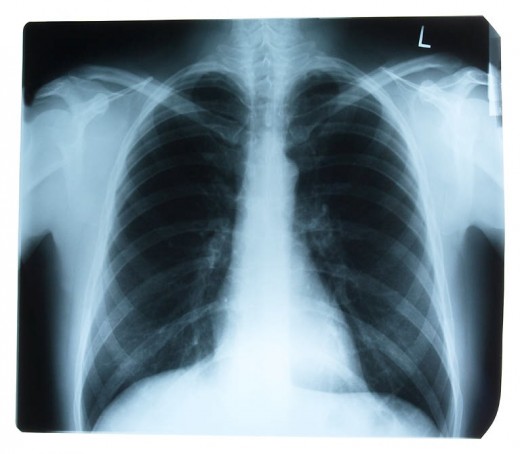Tobacco Smoking - Keep it Up if You Want Your Share of Pulmonary Edema

Pulmonary Edema
This is a very abbreviated discussion of pulmonary edema, a very serious and debilitating condition of and within the working parts of the lungs. It is frequently encountered in people with a history of tobacco smoking and, consequently, with all of the many health problems that can cause.
Edema refers to abnormal accumulation of fluid within individual cells and tissues of the body, and sometimes in body cavities. Edema results in swelling and occlusion of the affected parts. When fluid accumulates in the lungs the condition is called pulmonary edema.
Lung anatomy basically consists of intake and outflow tubing (bronchi and bronchioles), small sacks (alveoli) in which oxygen from inhaled air is obtained and from which waste gases, notably carbon dioxide, are expelled from the body. The alveoli, those little air sacks, are richly supplied with tiny, thin walled blood vessels (capillaries), through which in-and-out gas exchanges are conducted. These vital gas exchanges within the alveoli take place through osmosis by which waste gases flow from blood where their concentration is higher to where it is less plentiful, and in which needed oxygen moves into the body in the opposite direction.
Alveoli are normally empty of significant amounts of fluid; that is, they are appropriately "wet" but are not filled like some sort of liquid-filled vessels. Outside air enters the lungs through the bronchial tubing and into alveoli due to the partial vacuum created by downward diaphragm muscle movement. Air is expelled from the lungs by pressure to the lungs by upward movement of the diaphragms. Adequate gas exchange takes place in the alveoli.
If the alveoli become liquid-filled, less air enters them and gas exchange is significantly hindered. If oxygen-rich air cannot access blood in the capillaries, and if waste gases dissolved in capillary blood cannot contact outside air in alveoli, respiratory failure can occur. The more severe the edema, the more rapid can be the respiratory failure.
What are some of the causes of pulmonary edema?
There are two major types of pulmonary edema, cardiogenic, caused by pulmonary blood circulation failing to adequately remove fluid from the lungs, and noncardiogenic, which can be caused by direct injury or damage from disease to lung tissue (parenchyma).
Pulmonary edema symptoms are numerous and include symptoms with focal points other than in the lungs, per se.
A list of symptoms includes:
Difficulty in breathing, (dyspnea)
Frequent coughing, often with production of blood-tinted sputum
Inability to lie flat because of breathlessness (orthopnea)
Paroxysmal nocturnal dyspnea (sudden breathing difficulty in sleep)
Sweating without exercise
Pallid (overly pale) skin
Fluid overload (leg swelling)
Frequent urination at night (nocturia)
A list, not all-inclusive, of causes of cardiogenic pulmonary edema is:
Congestive heart failure
Heart attack with subsequent failure of the left ventricle of the heart
Heart arrhythmias; overly fast (tachycardia) or substantially slow (bradychardia) heartbeat
Sudden worsening of hypertension (blood pressure)
Pericardial effusion with tamponade (severe swelling of the pericardium, the sack surrounding the heart, squeezing the heart muscle)
Kidney failure or intravenous therapy causing fluid overload
A partial list of causes of non-cardiogenic pulmonary edema is:
Obstruction of upper airways (perhaps from asthma, COPD, or infection)
Contusion due to trauma (i.e. auto accident, etc.)
Fluid aspiration (i.e. drowning, gastric contents)
Lung re-expansion following surgery, thoracentesis (surgical removal of fluid), etc.
Excessive blood transfusions
Lung infections
Subarachnoid hemorrhage (stroke)
Rapid ascent to high altitude
Treatments
Treatments depend upon the cause, but are aimed at restoring or improving respiratory function and at removing whatever caused the breathing difficulties.








